The Balipara Foundation Awards introduced by the Balipara Foundation in 2013, stands as a platform to reward and encourage the efforts of grassroots conservationist and social entrepreneurs working tirelessly towards preserving the rich biodiversity of the Eastern Himalayas.
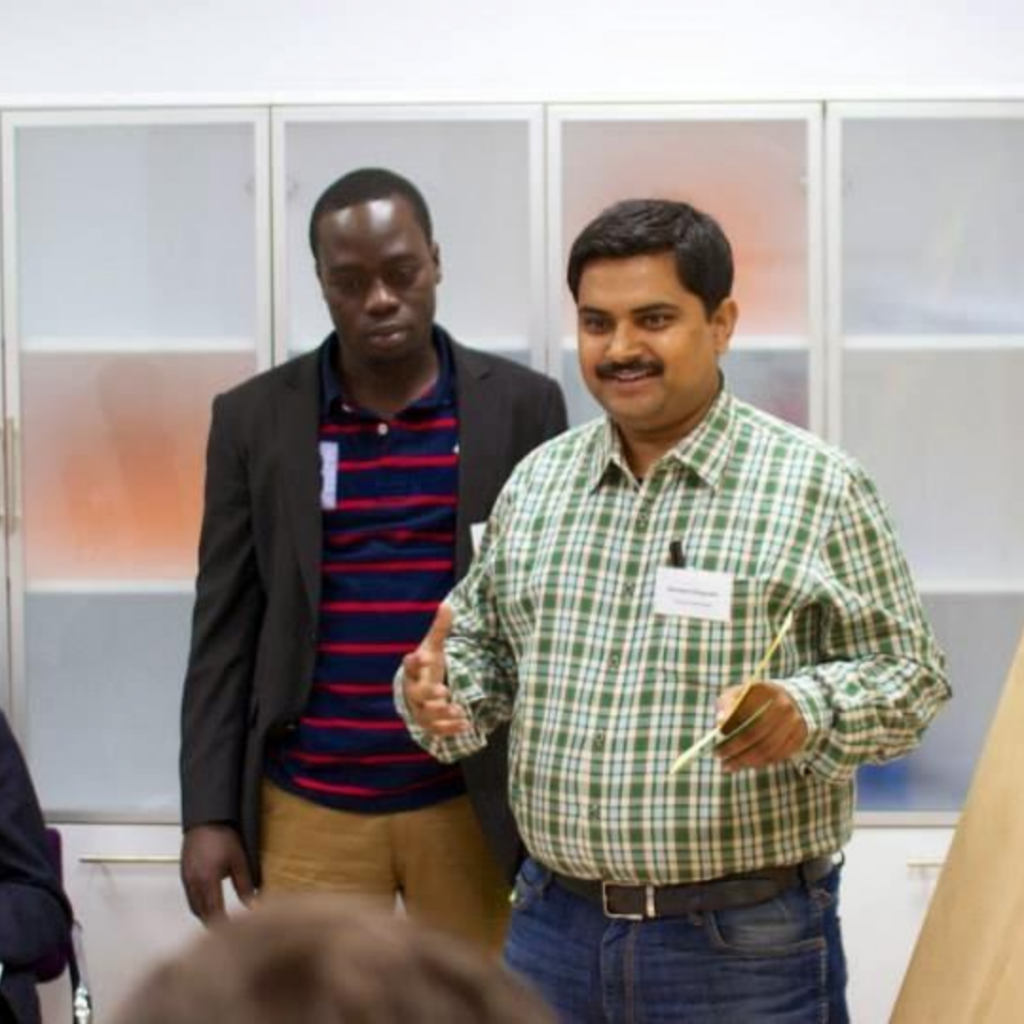
Balipara Foundation Awards
Arindam Dasgupta
Arindam Dasgupta, a graduate from the Institute of Rural Management (Anand) Gujarat, was working as an officer with Entrepreneurship Development Institute of India (EDII) in Guwahati back in 2005, where he decided to venture into the manufacturing of environment-friendly disposable dinnerware. He always had the dream of beginning a community-based startup for rural India and so he quit his job in EDII and joined a non-governmental organization called ‘Dhriti’, to promote areca nut sheaths and to work on the lines of community welfare. During the same time, he also began touring South India and visited around 40 areca nut plate production units.
Thereafter in the year 2009, Arindam established Tambul Plates Marketing Private Limited (TPMPL), which aimed at manufacture and marketing of areca nut plates in North-east India – Guwahati, Shillong and Dimapur, and other major cities including Delhi, Patiala, Patna, Mumbai and Kolkata. The main objective of TPMPL is to support producers of areca nut plates to market their products so that they need not worry about selling them. Due to TPMPL, the marketing reach of areca nut plates has extended to Europe, USA, South-east Asia and the Middle East.
Social Impact: TPMPL has helped in the training of more than 1000 individuals (out of which 400+ are women) in manufacturing areca nut plates. The organization has also helped local community members with high unemployment rates to get jobs. TPMPL has also provided additional income to sheath collectors, out of which the majority are women. (Sources: Seed Case Studies: Insights into Entrepreneurial Solutions for Sustainable Development). TPMPL has assisted in networking of areca nut producers with State Governments, NGOs, Institutions and Banks which has helped the local community in availing schemes/services, increasing outreach, improving technology and facilitating finance respectively for areca nut plate production projects. TPMPL is also involved in introducing solar lighting to the areca nut plate production units to address the problem of electricity shortage in villages.
Economic Impact: TPMPL helped increase sales and selling prices of areca nut sheaths for collectors by more than 30%. They are also working with the Assam Government to set up women-run household production units across 20+ districts of Assam. The company also created community production units for plates, which were owned and run by young men. From an economic point-of-view, the state of Assam contributes to 23% of the total plantation area of India to areca nut plantations alone. This makes enterprises like TPMPL very essential in Assam, so that areca nut sheaths are monetized, which otherwise would be simply discarded as garbage. TPMPL also developed a low cost, biomass-based, non-electrified dryer that can churn out 500 areca nut sheaths in 4-5 hours. They also designed a simple low cost stock room that enables storage of raw materials for +1 years. This has inadvertently helped in the increase of raw materials for areca nut producers. TPMPL is also involved in marketing of handloom and handicraft products and in the promotion of black pepper cultivation in areca nut plantations.
Environmental Impact: Base material of Tambul Plates is made out of biodegradable arecanut extracts and it discourages the use of plastic and styrofoam dinnerware. On an average the amount of CO₂ emissions are reduced by over 500 tonnes in the atmosphere. And use of areca nut-based plates help reduce plastic waste by atleast10 tonnes per year. (Sources: Seed Case Studies: Insights into Entrepreneurial Solutions for Sustainable Development). Use of areca nut sheaths also helps reduce deforestation in surrounding areas.
Awards and Achievements:
2013 – Winner of United Nations SEED – Low Carbon Award.
2013 – Finalist of The Changing Markets Award – 16th International Business Forum
2013 – Winner of Artha Venture Challenge.
2014 – Finalist of the National Skills Development Corporation – Skills Innovation Challenge (NSIC).
2015 – Discussion over Tambul Plates dealership and distribution outlets in Kenya with its market expectancy by early 2016.
Received seed investment from Upaya Social Ventures through ‘LiftUP Project’ that provides early-stage entrepreneurs with business development support and financial resources.
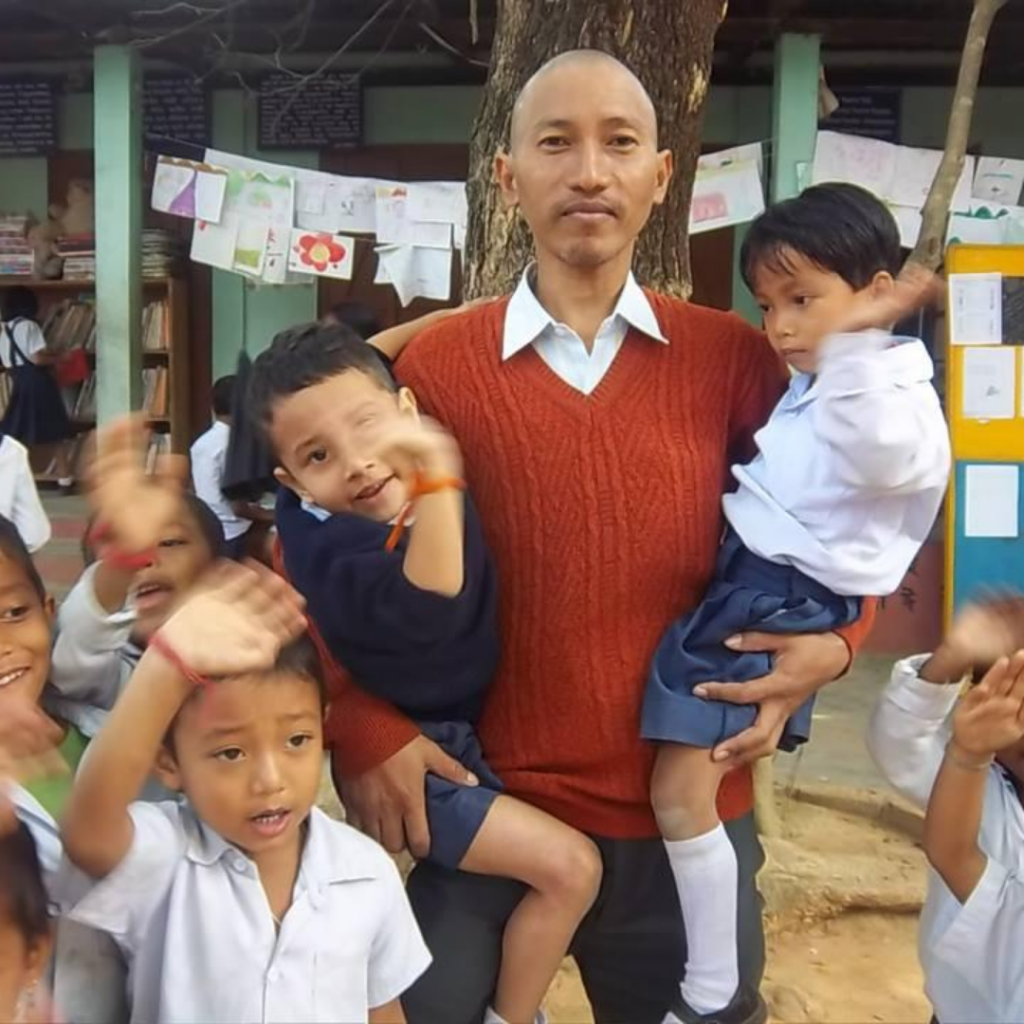
Green Guru Award
Uttam Teron
Born out of a humble household, son of a train driver father and a homemaker mother, Uttam Teron belongs to a hamlet called Pamohi, 12 kilometers away from Guwahati. A member of the Karbi tribal community of Assam, Teron was fortunate enough to get educated at Cotton College and Arya Vidyapeeth College in Guwahati. Post the completion of his education, after returning home, Teron noticed that very few children from his village went to schools. There were multiple social, geographic and economic factors that restricted the children from getting educated. Remoteness of the village from Guwahati was one of the causes, and so was the fact that villagers in Pamohi were inherently from poorer households who supported themselves by doing mining activities and agriculture. Most children were seen helping their parents on fields or doing household chores. Teron loved teaching, and to keep himself occupied, he began tutoring the children of his village. This was also the time when he noticed many of the children faced difficulty in reading, and a lot of them also discontinued studies midway. Teron strongly felt that every child should have access to proper education and realized that there was an urgent need for school in his village. All these factors motivated him to start ‘Parijat Academy’ – a school that provided free education and boarding to underprivileged children.
He established Parijat Academy in 2003 by spending his hard earned money of ₹800 as a tutor, to convert a cowshed into a classroom and four students to begin with. In the initial phases there were times in the academy when Teron was unable to pay his teachers with salary for long durations. And also securing funds for supporting the students with a classroom-environment and basic educational supplies used to be difficult. Teron still continued to support the academy, even if he had to take loans or favors. And Teron was gifted to have his parents and a few of his friends and well-wishers support him in his cause. Media attention brought about a lot of positive change to Teron’s initiative. Quite a few social welfare organizations and individuals contributed to the academy either financially or by providing some form of support. Volunteer teachers from India and abroad started approaching Teron to help him run the academy. And many organizations sent the academy old textbooks and stationery for the students. Teron was awarded with the Green Guru Award in 2013 by Balipara Foundation, to motivate and encourage his initiative in supporting underprivileged children receive education. And since, he has won multiple awards and accolades that have kept him motivated to his cause.
At present his ‘Academy’ as he likes to call it, provides schooling for 500+ children, out of which an equal or more number of the students are girls. He has also managed to set up a hostel for the students where he houses a proportional number of his students with food accommodation and other basic amenities.
Social Impact: He helped more than 500 children receive education in the tribal villages of Assam, including Pamohi, Maghuapara, Deosutal, Garchuk, Mainakhorong, Dhalbama, Nowagaon, Garoghuli, Garbhanga, Ahomgaon, Kotokipara, Chakardo, Pahamjila and Natun Garbhanga. Teron has also introduced the children to computer skills, sewing, art/craft and various other youth programs.
Economic Impact: By providing free education to the children of tribal villagers who mainly depend on mining for a living, Teron is providing the future of tribal community members with alternative livelihood options that will promote them to take up well-paid and better jobs.
Ecological Impact: Teron is assisting in diverting the younger generation away from mining activities and sensitizing them towards nature and environment. He regularly carries out nature treks, organic farming programs and self-sustaining programs with the children. He also collects school supplies by reusing old books, bags and stationery.
Awards and Recognition:
2009 – Social Service Award by Eastern India Women’s Association
2010 – Was listed as one of the 35 Youth Icons of India by India Today
2011 – Real Hero award by CNN-IBN
2013 – Social Service Award by Paresh Bhaishya Foundation
2014 – Global Visionary Award by The Vision Foundation, Ahmedabad
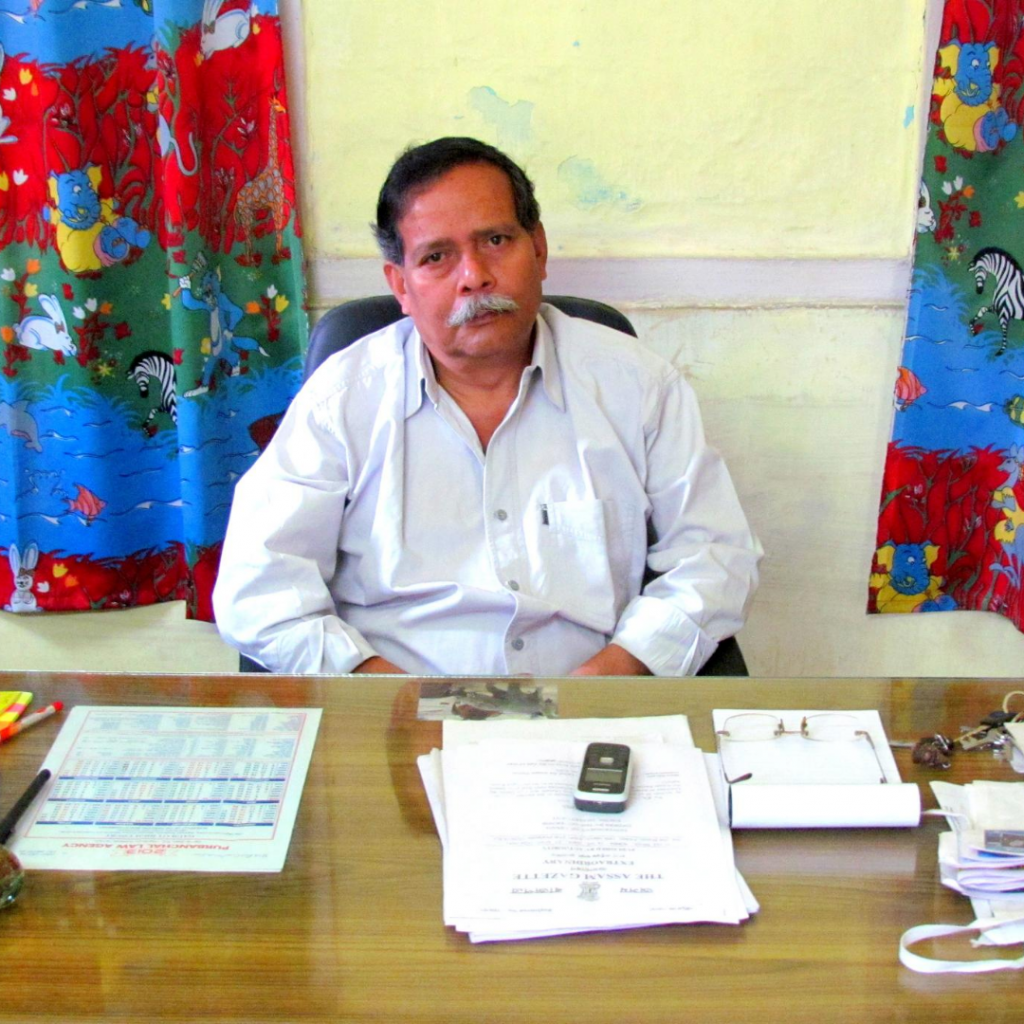
Green Legal Award
Gautam Uzir
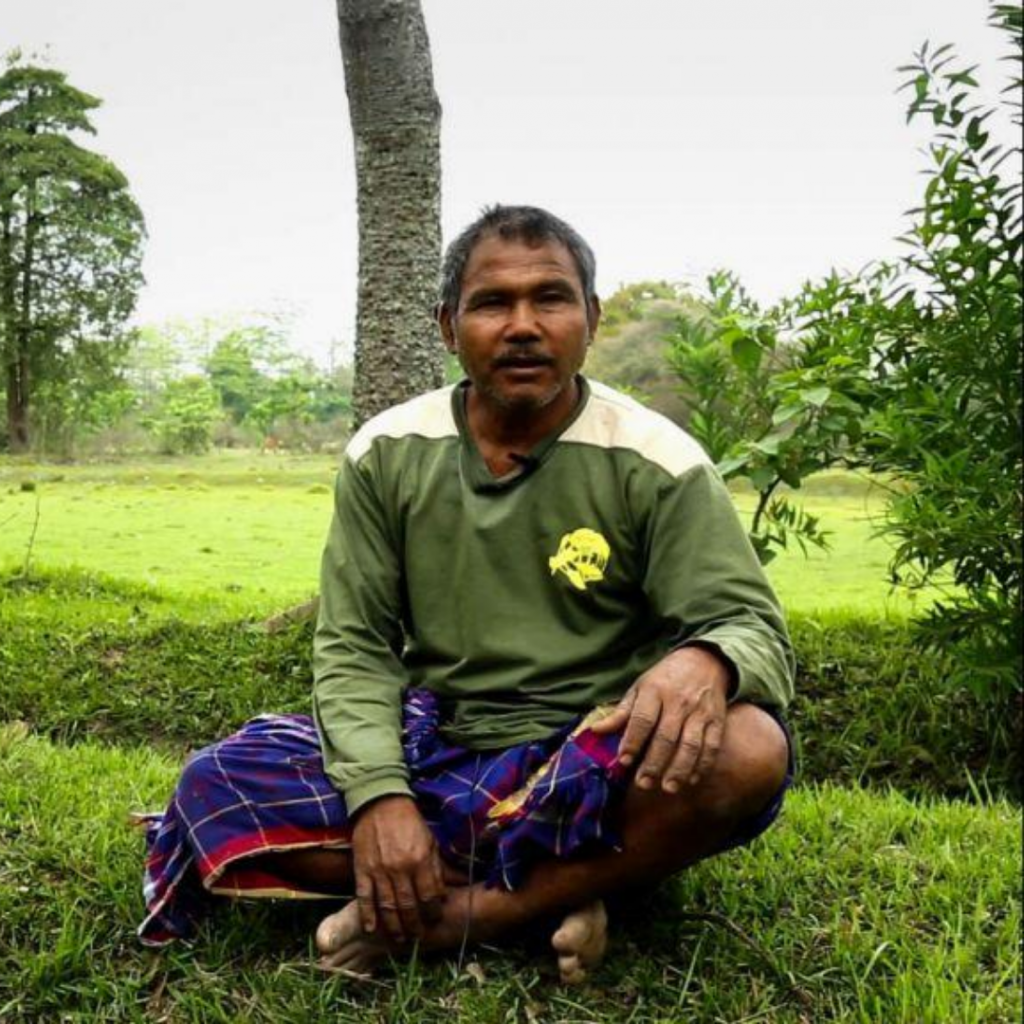
Eco Restoration Award
Jadav Payeng
Jadhav ‘Mulai’ Payeng belongs to the ‘Mishing’ tribe (one of the largest ethnic groups of Assam). He used to live in the forest ‘Mulai Kathoni’ at Aruna Chapori, with his wife and three children where his only source of income was selling milk. (He recently moved to his ancestral village in Jorhat District for the sake of his children’s education). ‘Mulai Kathoni’ – the forest was the name given by the Government of Assam, and it is called rightly so as he was the one who helped create it.
The journey to ‘Mulai Kathoni’ (Kathoni translates to forest in Assamese) begun when Jadhav, in 1979, then a 19-year old ordinary individual observed that due to lack of trees, plenty of heat-struck snakes died in the banks of Brahmaputra River, after a flood had hit Assam. When he asked the elders of his village what could be done to save them, they said that there is nothing he could do alone as the animals had lost their habitat and the only way to help would be by bringing the forests back. Payeng then approached the Forest Department if trees could be grown in the banks. The Forest Department replied by saying that nothing would grow in the banks besides bamboo, and they also added that it was a difficult task to carry out. Payeng took up on himself to painstakingly carry out bamboo plantations in one of the riverine islands of Brahmaputra. For a year he continued with plantations in the site. Then in 1980, he joined as a labourer in ‘Project Aruna Chapori’ which was initiated by the social forestry division of the district of Golaghat situated nearly five kilometers away from Kokilamukh in Jorhat District, Assam. After the completion of the 5-year project, Payeng remained in the forest and continued to plant saplings to the site. He also managed to look after the site which was slowly being converted into a healthy forest itself. Today, the same forest – ‘Mulai Kathoni’ is more than 5.5 sq.km. and is larger than Central Park, New York. In 2012, Payeng was honored by Jawaharlal Nehru University, Vice-Chancellor Sudhir Kumar Sopory as – ‘The Forest Man of India’. He was later awarded the ‘Ecological Restoration Award’ by Balipara Foundation in 2013.
Social Impact: Jadav has become an inspiration for the current generation on how a single individual’s contribution can be influential enough to bring about positive change in the environment.
Economic impact: Jadav’s contribution did not have a direct economic impact, but his role in creation of the ‘man-made forest’ has helped in the development of ecosystem services, the value of which is unmeasurable quantitatively to mankind.
Ecological Impact: The Forest Jadav helped grow, ‘Mulai Kathoni’ provides shelter to at least three rhinoceros and multiple other ungulates. It is also home to more than four Bengal Tigers (Panthera tigris). A herd of 150 elephants are known to regularly inhabit the Mulai forest each year. The avian diversity of Mulai forest is quite diverse with a good population of vultures. The forest is also home to thousands of trees among which are arjun, valcol, gulmohur, ejar, himolu, moj koroi, and hilikha are noteworthy.
Awards and Recognition:
2013 – Payeng was honored at the Indian Institute of Forest Management during their annual event ‘Coalescence’.
2014 – Movie on Jadav Payeng entitled, ‘Forest Man’, directed by William Douglas McMaster won the best documentary at the American Pavilion at the Cannes Film Festival.
2015 – Bridgewater Township Shade Tree Board (Team Arbor) and the Assam Foundation of North America (AFNA) felicitated Payeng with a Tree Plantation Ceremony in Martinsville, Virginia, United States of America.
2015 – Payeng was nominated for CNN Hero by members of FASS Executive Committee to promote about his work.
2015 – Payeng was honored with the Padma Shri Award, the fourth highest civilian award in India.
Payeng was the subject of a children’s book, ‘Jadhav and the Tree Palace’, written and illustrated by Vinayak Sharma and published by the open-source children’s publishing platform ‘StoryWeaver’ and production was funded by a grant from Oracle Giving Initiative.

Eastern Himalaya Conservation Award
Dr Anwarudin Choudhary

Food for the Future Award
Neelam Dutta
Lakshmi Agriculture Multipurpose Project (LAMP) is a composite farm established way back in 1978-79 by late Dr Hemen Dutta. It is situated in the village of Pabhoi in Sonitpur district of Assam covering around 12 hectares of land. Various farming activities like scientific fisheries, fish seed eco-hatchery and indigenous breeding of local fish varieties as well as ornamental fishes, takes place at LAMP. Neelam Dutta, the proprietor of LAMP, works on the motive of increasing productivity, availability and affordability of agricultural products. Neelam began working on agriculture and related projects from the age of 17, and has been exploring related fields like fish rearing, fish breeding, paddy cultivation, exotic vegetable cultivation, organic manure and bio-pesticide production. Neelam is also involved with the Assam Agricultural University through an MOU, towards research based propagation of efficient agricultural practices. He is also a well-known consultant in India in the Organic Agriculture Domain. Over the recent years, LAMP has diversified into Dairy, Nursery and Bio-Research as well. Neelam has played an active role in providing knowledge and training consultancy to farmers and institutions. LAMP also provides onsite consultancy to farms, fisheries and nurseries in productivity and practice issues. Neelam has been awarded in both state and national level for his contribution towards the field of organic farming.
Social Impact: LAMP grows different types of indigenous (Indica and Japonica) and high-yielding varieties of rice (Joha, Kumol, Bora and Aijong saul).
Ecological Impact: LAMP follows and promotes organic cultivation of common and exotic varieties of crops. LAMP also makes use of vermiculture hatcheries instead of chemical fertilizers for increasing productivity in its agricultural, horticultural and plantation crops. Highlight of LAMP has been fish production.
Economic Impact: LAMP’s diary has steadily been growing in its capacity and productivity since its inception. LAMP has also
Awards and Recognition:
2014 – Neelam was awarded the prestigious Haladhar Organic Farmer Award, 2014 recently by the Indian Council of Agricultural Research, Government of India in New Delhi.
2015 – Neelam Dutta was part of the organizing team to conduct a training program in organic farming for farmers, students, NGOs, government organizations and the people of Nagaland.
2016 – Neelam won the ‘Mahindra Samriddhi Krishi Samrat Samman’ – Farmer of the Year Award (Male) – Mahindra Samriddhi India Agri Awards (MSIAA) in Delhi.
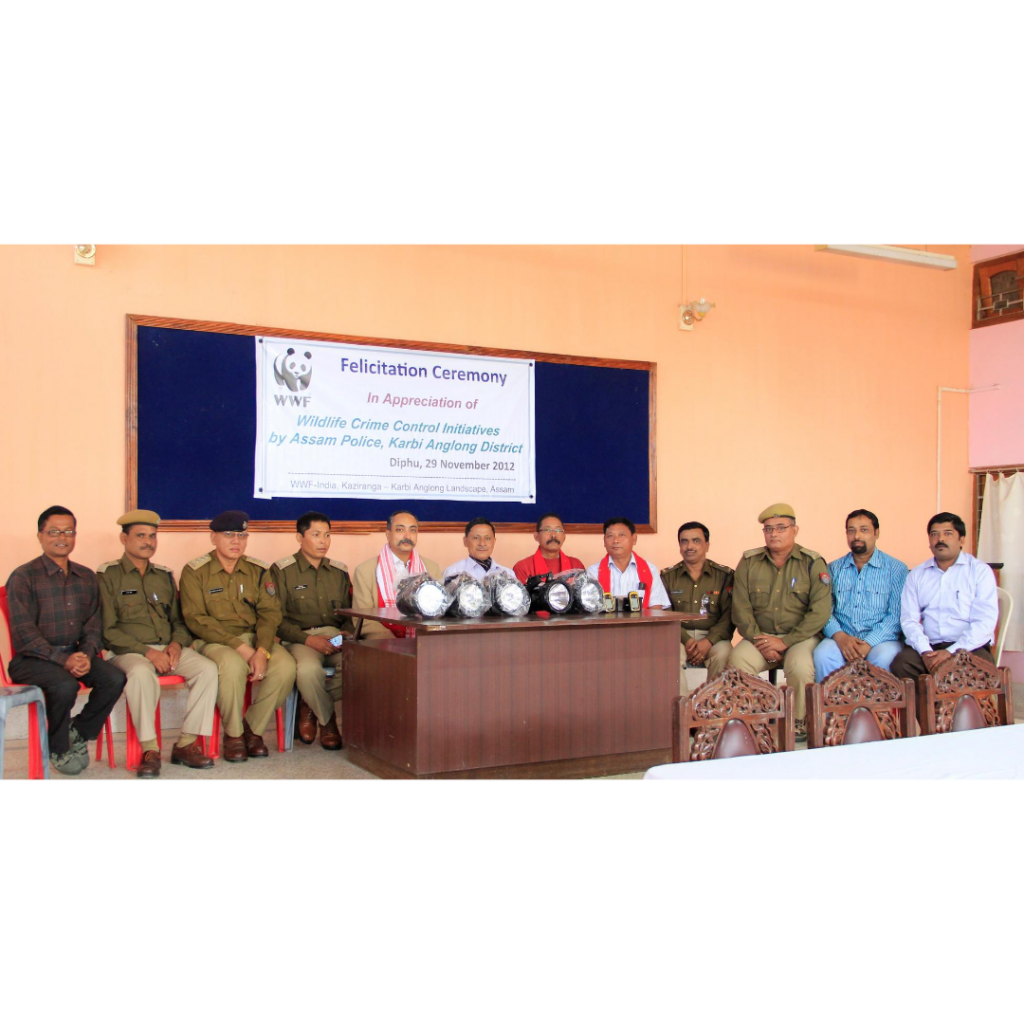
Nature Conservancy Award
Karbi Anglong Police Department
Wildlife poaching incidents were on a high in 2012. Floodwaters and rampant poaching of Indian rhinoceros (Rhinoceros unicornis) was deeply concerning issues to Assam’s Wildlife. This was the time when the government initiated an investigation by the Wildlife Crime Control Bureau and also strengthened the Forest Protection Force with high-caliber arms. During the same time KAPD took stern steps to combat rhino poaching in Karbi-Anglong District adjoining the southern part of Kaziranga.
A long history of one-horned rhino poaching in Assam influenced KAPD to work dedicatedly towards wildlife crime. Hard work and honest officers with their wide network of informants and countless hours of effort finally brought KAPD their breakthrough when they arrested seven individuals in Roja Pahar Area, Assam when they were involved in the poaching of a rhino on the 13th of October 2012. Following which seven more poachers were arrested by KAPD with possession of an AK-47 rifle and .303 rifle. A long list of arrests related to rhino poaching occurred after the initial arrests and at least 47 suspects were caught in this duration. During the same course, multiple active and surrendered militants belonging to several outfits were also arrested for involvement in rhino poaching or any other related crime.
Social Impact: KAPD’s operations to combat wildlife trade and crime was at around the time when the state of Assam was recuperating from aftereffects from flood and dealing with constant communal violence. KAPD was also involved in relief work of flood-affected populations and regions of Assam. KAPD was also able to do all this work under the threat of militancy in Assam.
Economic Impact: KAPD’s work has not directly resulted in economic impact, but their crackdown on wildlife trade has helped reduce the wildlife trade activity in Assam.
Ecological Impact: KAPD’s efforts have directly resulted in securing the population of the existing One-horned rhinoceros in Kaziranga National Park and neighboring areas. KAPD’s contribution in controlling the wildlife trade and crime managed to damage the network of poachers, middlemen and buyers. The overall number of poaching cases have also gone down since the KAPD’s involvement.
Awards and Recognition:
2012 – WWF India felicitates KAPD for their work on controlling Wildlife Crime.
2013 – Wildlife Crime exclusive Police Stations set up in Kaziranga National Park, Manas National Park and Pobitora Wildlife Sanctuary.
2015 – Prabhakar Barua Rhino Conservation Trust awarded Assam Police Inspector Naba Kumar Borah, Officer-in-charge of Diphu Police Station in Karbi Anglong.
2016 – KAPD arrested a poacher involved in a Tokay Gecko smuggling case.
2016 – Guwahati High Court orders Assam Government to empower KAPD to file charge sheets against wildlife-crime related cases.
2016 – KAPD with the Assam Police Department and Special Task Force nabbed four most wanted rhino poachers along with firearms.

Young Naturalist Award
Munjali Tokbipi
A member of the Karbi Community, Munjali has been working relentlessly to protect wildlife and green cover in the Karbi-Anglong landscape along with local communities, for which she was awarded the Young Naturalist Award by Balipara Foundation back in 2013 when she was 27 years old. Munjali’s father works as a government employee and her mother is a housewife, and they both supported her on her choice to take an upbeat career path and work towards wildlife conservation. Munjali completed her graduation in Geography from Diphu Government College and completed her post-graduation diploma on Natural Resource Management from Nowgong Girl’s College under Guwahati University in the year 2011. After which she went on to spend considerable time with local communities in distant villages to document and explore its past and present wildlife, and also to motivate local resident communities towards a sustainable lifestyle. Munjali joined northeast India-based wildlife NGO – Aaranyak and got involved in the first ever ecological research project in the Karbi-Anglong district, which was also a part of the Tiger Research and Conservation Initiative. She is the first woman from the Karbi Community to work on Wildlife Research and Conservation.
The Karbi Anglong landscape is home to several tribal communities who lead a traditional lifestyle that is intricately linked to the forests. The region has also a long history of civil unrest and armed conflict which has restricted development and modernization among communities. The Karbi-Anglong landscape stands at about 7000 sq.km. which meets Kaziranga National Park in the north. The landscape has been understudied in the past and post the project structured by Aaranayak, interesting findings and results have been revealed. The study was aimed at assessing patterns of large mammal distribution in the Karbi-Anglong landscape, and also to look into the interactions between wildlife and local communities. The study also aimed at assessing the overall conservation potential of the landscape. Munjali was a part of data generation of spatial databases of settlements and roads. And she also conducted training programs for the local youth to carry out wildlife surveys in the landscape. A grid-based methodology was used by the field team to survey the local communities to inquire about animal signs/surveys and also about their occupancy in the landscape. The field team also carried out structured interviews with the key informants of the landscape – hunters, shifting agriculturists, etc. Munjali led and helped carry out the project in the Karbi-Anglong landscape, despite their team facing accessibility issues in a volatile environment that faced inter-tribal conflict. The project was funded by a U.S, based organization-Panthera. The total cost of the project was almost ₹ 5 Lakhs.
Social Impact: Munjali is the first female wildlife researcher from the Karbi-Anglong landscape to take up wildlife conservation and management as a full-time career. In process, she has become an inspiration for the local youth, especially the women of tribal communities to follow the similar upbeat career paths that Munjali started. She also was a part of the training programs that helped mobilize more than 50 youth of Karbi-Anglong landscape in the training for wildlife data collection.
Economic Impact: Munjali’s work did not result in the direct delivery of economic outputs but her involvement in the ecological research work in the Karbi-Anglong landscape has helped expose the youth of the region to adopt livelihood opportunities by supporting wildlife conservation based initiatives.
Ecological Impact: Results of the Karbi-Anglong occupancy study of large mammals, which Munjali was a part of, carried out more than 12,000 interviews with informants (hunters, shifting agriculturists, etc) in 285 grids in the study area. The study revealed that 70% of the total area of the district was permeable to tiger movement. The study also found that 90%of the area had elephant, wild pig and barking deer presence. The study also revealed that tigers, sambar and gaur had restricted distribution in the landscape. The study also helped reveal that human-wildlife conflict was one of the major issues existing in the landscape.
Awards and Recognition:
2013 – Participated in the 3-week international ‘Behavioral Change Conservation Campaign Course in Tadoba-Andhari Tiger Reserve (TATR), organized by Satpuda Foundation, in collaboration with Amravati University, state wildlife department, Nature Conservation Society Amravati (NCSA) and Environment Education Conservation Global (EECG), USA.
2013 – Won the 2nd Best presentation for her research work on ‘Large Mammal Occupancy from Interviews’ in the Karbi-Anglong Landscape – Student Conference on Conservation Science at the University of Queensland in Brisbane, Australia.
2013 – Munjali was part of the Flood Awareness Campaign along with Arif Hussain, under the guidance of Dr Firoz Ahmad (Supporting partners of the campaign – Aaranyak NGO and Numaligarh Refinery Limited in association with the Kaziranga National Park authority).
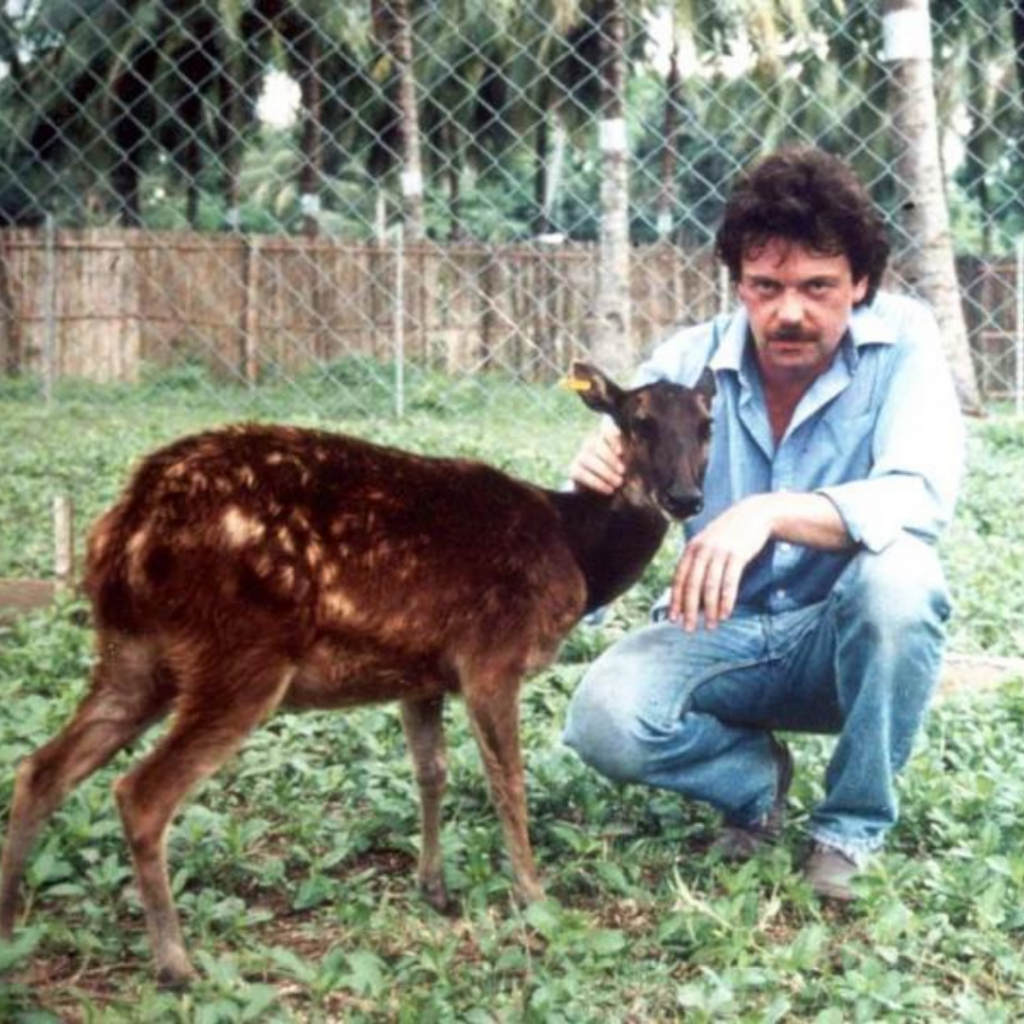
Annual Award
William Oliver
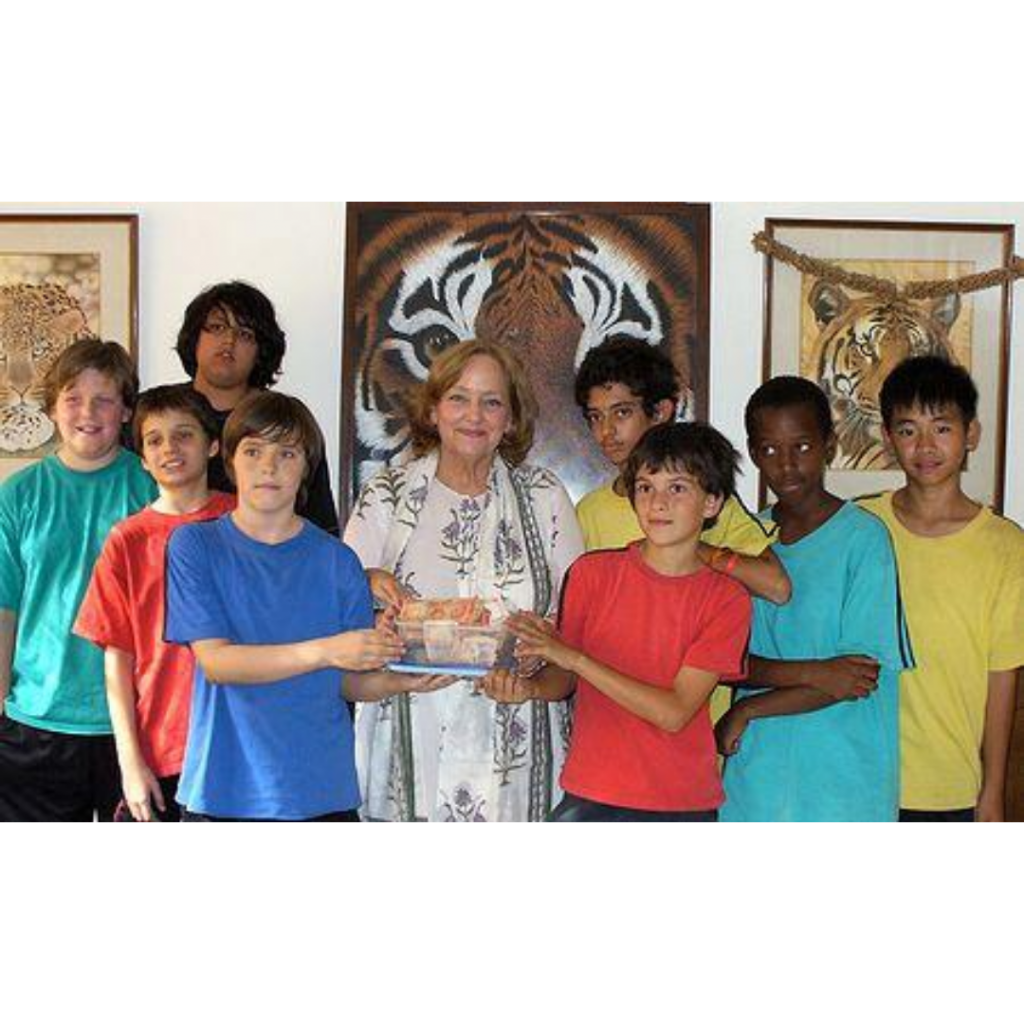
Lifetime Service Award
Anne Wright
Anne Wright was born the daughter of British ICS Officer and she spent her childhood in the forests of Central India. She is also the founder trustee of World Wildlife fund for Nature – India, which she helped setup in the late 1960s. She was appointed by the late Prime Minister Indira Gandhi as a member of the Tiger Task Force for Project Tiger in 1970. She then served for 19 years on the Indian Board for Wildlife and was closely involved with the passing of the Wildlife Protection Act. She was awarded ‘Order of the Golden Ark’ and the ‘Most Excellent order of the British Empire’ for her contributions towards wildlife.
Her journey to being one of the initial pioneers to ‘Wildlife Conservation in India’ begun with her growing up in the Central Provinces (CP), among the jungles of Balaghat and Melghat, where she learnt about observing wildlife and other basic field skills that set her path towards becoming a vivid wildlife explorer. Her mother died at the age of 12 after which she did not visit India until she was 17 years old, when her father was posted as a Counselor to the First British High Commissioner of Independent India. She then married Bob Wright, a merchant from Kolkata and continued to live there with occasional visits to England. Initially, Anne and her husband would indulge in social hunting of wild animals in the forests of Bihar. She was even close to killing a tiger herself, but fortunately it evaded from getting shot. Anne felt strongly to bring about positive change towards wildlife during the 1968 drought in Bihar, where poachers would target and kill wild animals that made use of the only remaining waterholes to quench their thirst. She managed to raise funds to set up rescue camps for wild animals in Northern Bihar where the team dug up riverbeds and filled them with water using tankers. Anne then convinced S.P. Shahi, CCF of Bihar to contribute in their work which resulted in the initiative providing water to not just wildlife in its landscape but also 17 forest villages as well. She then encouraged CCF Shahi to give up his guns and resort to documenting wildlife using cameras. After her stint in Bihar, she started working towards combating illegal wildlife trade in Kolkata and uncovering the extent to which tigers were being killed illegally without proper hunting licenses, to facilitate the wildlife trade demand. Anne wrote an article for the Stateman in 1970 and New York Times in 1971 on the illegal trade of wild animals, especially tigers and leopards in India. Her articles were one of the initial documentations that highlighted the poaching and hunting scenario that India faced post-independence. Anne was a member of the state wildlife boards of West Bengal, Sikkim, Orissa, Bihar, Arunachal Pradesh, Meghalaya, Andaman and Nicobar Islands. She is also a chairperson of the Rhino Foundation through which she has contributed towards saving the Rhinos of Northeast India.
Social Impact: Anne’s initiative to provide waterholes in the forests of Bihar during the draught of 1968 resulted in the Forest Department also providing water to 17 forest villages.
Economic Impact: Kipling Camp, a sustainable wildlife tourism-based camp that she started, provides employment to local community members in and around Kanha National Park in Madhya Pradesh, India
Ecological Impact: Anne was a part of the Tiger Task Force that was constituted in 1970 by late Prime Minister Indira Gandhi along with other influential members like Dr. Karan Singh, Dr. M.K. Ranjitsinh, Zafar Futehally and Kailash Sankhala. She was a part of the team that helped declare India’s first nine tiger reserves. The program was funded by the Central Government and Guy Mountfort of WWF. The program required Anne to stay in two of the tiger reserves for three months each and she chose Palamau in Bihar and Manas in Assam. She was also influential in redrafting of the 1912 act that levied a fine of Rs.50 for hunting tigers. A new Wildlife Protection Act Law was passed all over India except for the states of Jammu and Kashmir, which helped deter hunting and poaching of wildlife in India. During her tenure as state wildlife board member of several states in India, the board team pushed forward the creation of Bhitarkanika Wildlife Sanctuary (WLS) in Orissa in 1975, Dalma WLS in 1976, Gautam Buddha Wildlife Sanctuary in Bihar in 1976, Buxa Tiger Reserve in West Bengal in1983, Namdapha National Park in Arunachal Pradesh in 1983, Sundarbans National Park in West Bengal in 1984, Nameri in Assam in 1985, Dibru Saikhowa Wildlife Sanctuary in Assam in 1986, Neora Valley National Park in West Bengal in 1986, Balphakram National Park in Meghalaya in 1986, Chilka Lake in Orissa in 1987, and Jaldapara in West Bengal in 1990.
Awards and Achievements:
1983 – Awarded the ‘Most Excellent order of the British Empire’
2013 – Lifetime Service Award by Sanctuary Asia Magazine


